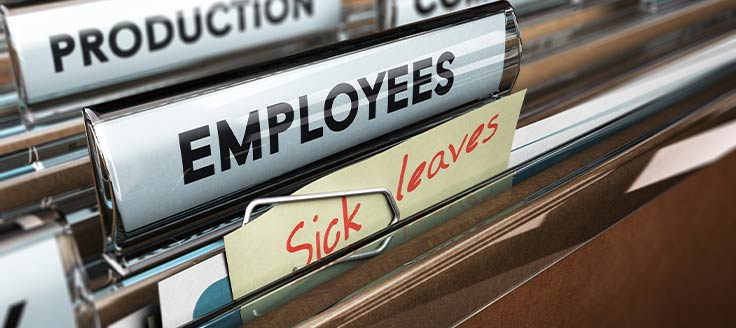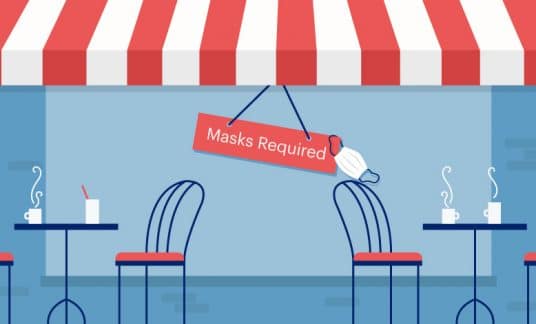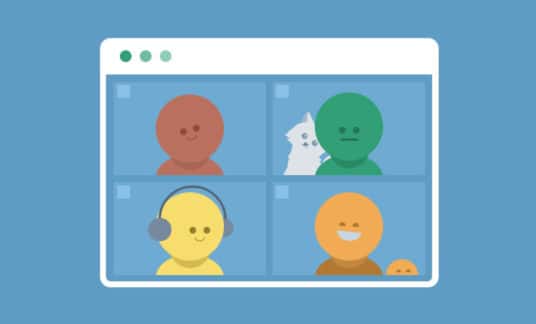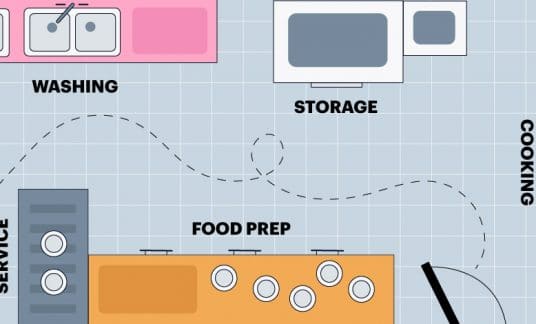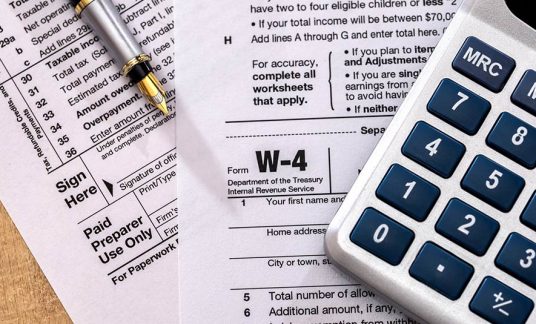Do you need to adjust your small business sick days policy? You’re not alone. Many business owners face tough decisions due to coronavirus in the United States. Learn how to adapt your rules to protect your employees and the future of your company.
Sick Day Policy for Small Businesses
Most likely, you already see an increase in requests for time off. Your staff may need to care for young children affected by school closures. Others might show symptoms and worry about infecting other employees. As coronavirus updates come in, workplace policies and guidelines change daily.
Prevent panic among your employees by clearly communicating your sick day policy. Attorney Francis Alvarez tells the Society for Human Resource Management (SHRM), “We believe employers would be wise to review their paid-time-off practices immediately.” But it’s essential to also review:
- Your infectious disease policy, which lists guidelines for specific diseases and workplace policies
- Recent coronavirus updates to state and local paid sick leave laws
- Process for the Family Medical Leave Act (FMLA)
- Other fringe benefits you offer staff
- Unpaid time off policies and procedures
- Travel policies, such as requiring workers to self-quarantine after domestic or international travel
- Your workplace safety plan to cover your response to an outbreak
Checking and revising your documents keeps your business legal and protects employees. Adding flexibility to your policy encourages employees to stay home when ill, reducing the chances of a workplace outbreak. Yet, sick day policies for small businesses rarely consider these unique circumstances.
-
What Is Coronavirus?
Coronavirus in the USA changed personal and business lives. As the virus moves across the globe, small business owners make hard decisions. During this time, it’s vital to use appropriate terms when speaking to your staff.
Coronavirus. This is the word for a family of viruses. For example, the common cold is a coronavirus.
Novel coronavirus. When a new version of the coronavirus comes about, then we use the term novel or new.
COVID-19. This term is the disease that stems from a coronavirus. The number stands for year experts detected the condition.
SARS-CoV-2. SARS stands for severe acute respiratory syndrome. SARS-CoV-2 is the virus that causes COVID-19.
Coronavirus in the USA: Impact on Businesses
Let’s face it. The effect on your company is huge. Over the last few weeks, you’ve had fewer customers. Now, you may face forced closure. Small business owners furlough workers with no pay. Or offer remote work options. But, without income coming in, then it’s hard to meet payroll obligations.
The latest data from the National Federation of Independent Business (NFIB) Research Center reports that “74% of small businesses are not currently impacted by the coronavirus outbreak.” But, out of those affected:
- 39% are experiencing supply chain disruptions
- 42% see slower sales
- 4% have sick employees
Business owners should stay on top of the latest coronavirus updates and follow advice from the Centers for Disease Control (CDC) as they navigate this difficult time. If you’re already experiencing cash flow problems, you might want to look into small business loan options.
How Coronavirus Affects Small Business Sick Days
Until now, federal law hasn’t required small businesses to provide paid sick leave to employees. However, federal and state governments have recently taken swift action, with new bills aiming to guide small business owners and give relief to sick workers.
In fact, the Families First Coronavirus Response Act (FFCRA), which President Donald Trump recently signed into law will affect public employees and private businesses with fewer than 500 employees. It provides for:
- 2 weeks of paid sick leave with 100% of average pay (up to $511 per day) for individual use. Paid sick time to care for family members is limited to a maximum of two-thirds of the employee’s pay, not to exceed $200 per day (or $2,000 total).
- 12 weeks of leave if you’re unable to work or telecommute due to your child’s school or care provider closing as a result of the coronavirus. In these instances, employers must pay 67% of your regular rate of pay (up to 10 weeks), with a maximum of $200 per day, not to exceed $10,000 total.
- Note: The first 10 days of Emergency Family and Medical Leave may be unpaid
The emergency order applies specifically to coronavirus cases and is applicable to workers who have been employed for at least 30 days prior to a leave of absence. Companies with fewer than 50 employees can receive an exemption if they can show that the mandate would have a negative impact on their business.
If you’re wondering how your company will pay for these sick days, the bill allows for payroll tax credits each quarter.
This program is currently set to remain in effect until December 31, 2020.
Notable Companies That Changed Sick Day Policies
Several large companies reacted to the outbreak, or in some cases, public outcry, by adjusting sick day policies. Starbucks, Walmart and Apple now provide paid time off. Other big companies include:
Lyft announced they’ll “provide funds to drivers should they be diagnosed with COVID-19 or put under individual quarantine by a public health agency.”
Uber said they “will provide you with financial assistance for up to 14 days if you actively drive or deliver with Uber and get diagnosed with COVID-19 or are personally placed in quarantine by a public health authority.”
On March 9 journalist Judd Legum garnered significant attention with his viral tweet about Darden Restaurants’ lack of sick leave. Some of the restaurants Darden owns include LongHorn Steakhouse, Olive Garden, Bahama Breeze and The Capital Grille. Nation’s Restaurant News reports that Darden “changed its policy within 10 hours of the tweet,” announcing that effective March 9, all of their hourly employees would have permanent paid sick leave benefits.
Guidance for Remote Work and Sick Day Policies for Small Business Owners
The CDC provides advice to help business owners plan and respond to coronavirus in the USA. According to the CDC, “To prevent stigma and discrimination in the workplace, use only the guidance described below to determine risk of COVID-19.” Review your liability insurance and get legal help, as needed. Then, support your staff by:
- Offering instructions on how to watch for symptoms
- Reviewing the language of your small business sick day policy
- Adding flexibility to help workers who must quarantine or care for family members
- Talking to staff members at an increased risk from coronavirus
- Providing instructions for completing a risk assessment before coming into work
To keep your business functioning, it’s important to review other options as well. Combine a sick day policy for small businesses with remote work options and a plan for sending employees home.
Offer Remote Work Options
Reduce the amount of small business sick days your staff needs to use by offering work from home options. If you’re able to keep employees home, then you might experience less downtime. The CDC also recommends staggering your work hours, when possible. Doing so places more space between team members in your workplace.
Give Guidance on How to Work From Home
If you switch to remote work, then place essential documents in a cloud-based system. Develop a process list that identifies tools and procedures for virtual staff. It’s important to give your team access to extra support to ensure business continuity during a pandemic. You can also use web conferencing or messaging apps to stay in contact with virtual workers.
Send Sick Employees Home
During this outbreak, it’s crucial to act fast to get sick people away from others. You may need to ask folks to go home or assess the risks on an individual basis. During this time, it’s vital to obey all business laws, so you don’t discriminate against a person based on their health.
When you create rules that guide who you send home, make sure they’re consistently enforced. If you send home a receptionist who’s showing signs of a potential respiratory illness, such as a dry cough, then you must apply those same rules to a supervisor.
How to Send Sick Employees Home
If you notice a sick worker, then you may ask them to go home. Yet, it’s essential to check with your local government and legal counsel about guidelines for self-reporting COVID-19. In the past, employers were discouraged or disallowed from asking about the type of illness. But, due to the risk, the CDC may require you to ask if your employee has or has been exposed to the virus.
Take Steps Now to Allow Small Business Sick Days
The novel coronavirus outbreak is still unfolding, and unlike other types of emergencies, we don’t know much about the illness. The situation might go on for many months. In some cases, you may need to address policy questions before receiving government aid. Review recent coronavirus updates and policy decisions. Then consult with a business lawyer to go over any changes to your plans.




